As we have observed here before, the appalling impact the pandemic has had and continues to have across the world on people, economies, and the higher education sector does not seem to have affected the seemingly endless and unstoppable production of university league tables.
Despite all vaccination attempts the rankings are still being produced and spreading at an alarming rate. Anyway, know your enemy they say so it’s time for a round up of a few you may have missed while doing something more important in preparing for the easing of lockdown and planning summer holidays to a number of specific destinations.
From sunshine ratings to packaging stars, and from electric vehicles to students going solo, we’ve got every new ranking you could imagine here. One we are not going to mention , is this appalling essay mill ranking which I’ve written about before.
Single beds
First up is this frankly pointless ranking of universities based on the numbers of students who are single. With many thanks to the ever-reliable Tab for picking this up:
Those studying at Oxbridge clearly don’t have time to find love, explaining why over half of the students are single. The University of Cambridge is seventh with a 52.6 per cent single population. Meanwhile, the University of Oxford is fifth with 53.8 per cent.
Coming in fourth on the list is the University of Manchester with 54.9 per cent. Here, you have a pretty good chance of finding someone nice to share chips and gravy with, even if you don’t understand a word they’re saying.
Finally, as all the Londoners like to remind us, they are championing again with these statistics – UCL, SOAS University of London and Queen Mary make the top three spots for singletons. UCL and SOAS are in joint second place with 54.9 per cent. Whilst, in first place, Queen Mary University of London has 55.3 per cent of students labelling themselves single.
Shame.
As we all know there is never anything as accurate as a league table based on self-reporting of data by students, so we can all take this one as gospel.
Go Greener
Just when you thought universities could not learn more from the private sector, here’s a financial services comparison website offering some robust environmental advice in the form of a league table all about electric vehicles or some such:
With university students ranking as one of the most likely groups to be concerned about climate change and a staggering 94 per cent actively looking to reduce their environmental footprint, the car insurance team at money.co.uk have looked at which university institutions are most committed to sustainable transport on campus.
The new EV University League, ranking more than 100 UK universities, reveals that 30 institutions have really embraced a greener way of travelling to study and work.
Over a period of two months, money.co.uk submitted Freedom of Information requests to 130 UK universities, asking them about their current infrastructure for EV vehicles and sustainable transport.
Of eligible universities (i.e. Universities that had physical campuses with on-site parking), 101 replied to our requests, allowing the team to create a comprehensive league table based on several factors.
They claim to have done some measurements of stuff in four areas:
- Does the university provide any electric vehicle charging for either staff, fleet, or students?
- Is the charging of electric vehicles free?
- Is the ratio of EV charging to total car parking spaces 1:100 or greater?
- Is the ratio of bicycle spaces to car parking spaces 2:1 or greater?
They then divided them into leagues. Here’s the A+ league. I rapidly lost interest in this dumb activity and its methodology at this point.
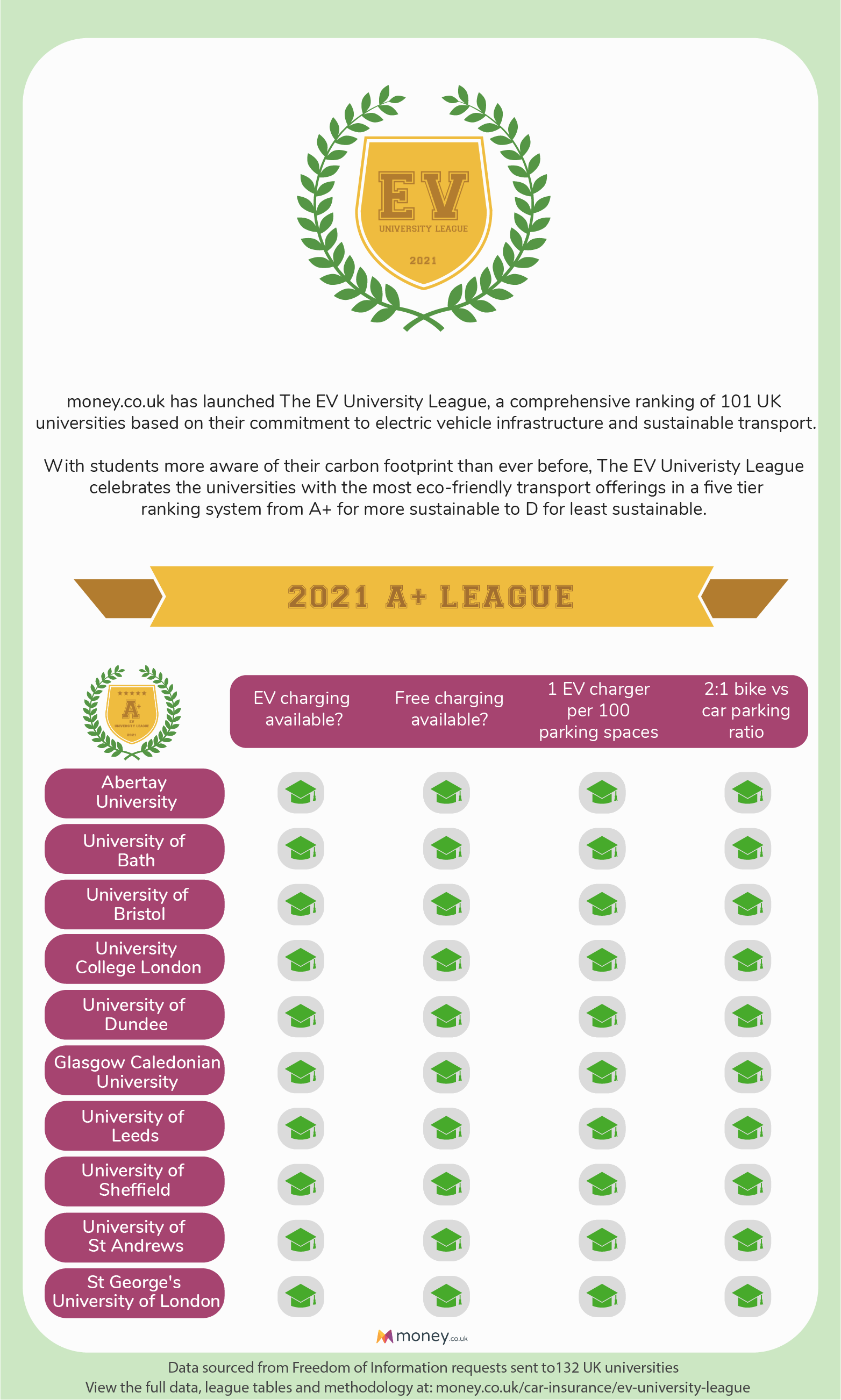
Apparently
Out of the 101 universities in the study, there were 30 that showed excellent commitment to sustainable transport, based on the league criteria.
I can’t be the only one who is delighted that a financial services price comparison website is getting universities to spend public money on pointless FOI requests to tell us how good we are at sustainability.
Here Comes the Sun
Then, very timely for summer, those lovely people over at the University of Bantshire have come up with the University Sunshine Rankings. It’s good to have something a little more serious to consider.
Discover who Radiates Excellence in the University Sunshine Rankings!
The rankings are based on two key metrics: average annual sunshine (source: Met Office, nearest climate station), and the number of the letters S, U and N in the university’s name. These metrics are weighted 99% and 1% towards the final ranking. The rankings are based on main campus postcodes only.
It’s a flawless methodology and I don’t think anyone is going to argue with the results
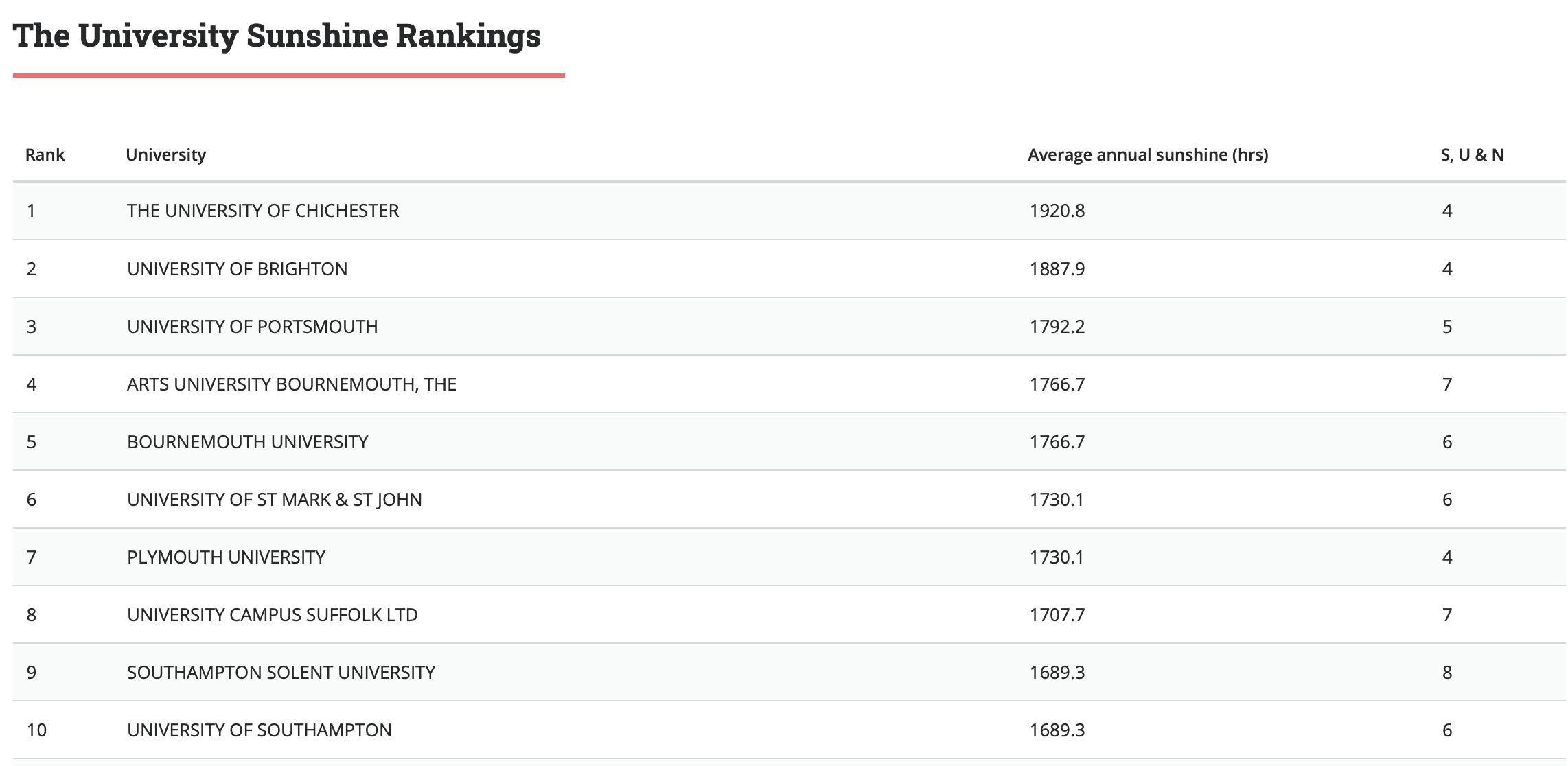
Getting Creative
Next up is one I’ve not seen before, it’s “The Rookies” – a ranking which claims to identify the Top 50 creative media and entertainment schools and colleges in the world for 2020. Reassuringly, they take this “very seriously and no external influences or payments are entered into at any point”. Rather:
Our rankings focus on the quality of students portfolios that are submitted to our judging panel which best reflect the recruitment interview process.
We feel that traditional school rankings that include peer and employer reviews, faculty to student ratio, citations and other data are not adequate when ranking the best creative schools.
These schools are very different to non-creative schools and they need to be ranked accordingly. Students at creative schools don’t all take the same exam to graduate. It’s a whole different ball-game and students’ abilities can’t purely be based on a technical exam. For a creative student, their digital portfolio that showcases their skills is the most important factor at play for a recruiter.
If you say so. Anyway, the top 10 looks like this
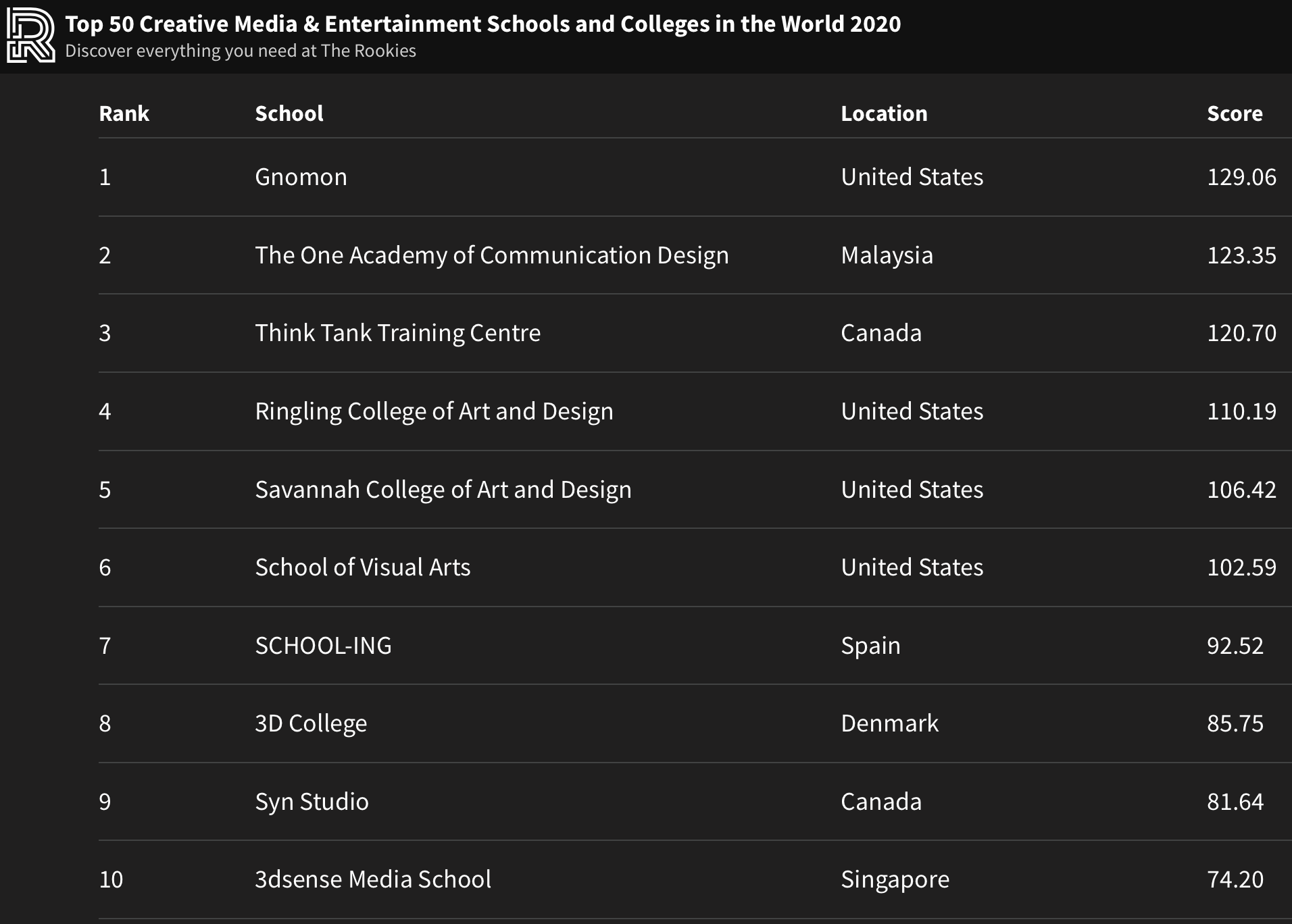
I have heard of just one of these. The highest placed UK institutions are Hertfordshire at 13, Bournemouth at 27 and Staffordshire at 38 (they’ll be gutted they were pipped by Max the Mutt College of Animation, Art and Design).
All Wrapped Up
In similar vein we have the Pentawards ranking which appears to have something to do with higher education but also a keen focus on agencies you might not have heard of. Still, who are we to argue, it’s a ranking after all:
Showcasing the creative minds behind the world’s finest packaging design, our league tables rank the most successful design agencies, freelancers, universities, packaging suppliers and manufacturers. The question is, can you climb up the table or hold on to your top spot?
The professional and student league tables are updated each year, to reflect the best creative minds in packaging design, and are based on the winning entries from the Pentawards competition. Year after year, the quality and variety of the entries has grown, making that top spot more and more difficult to reach.
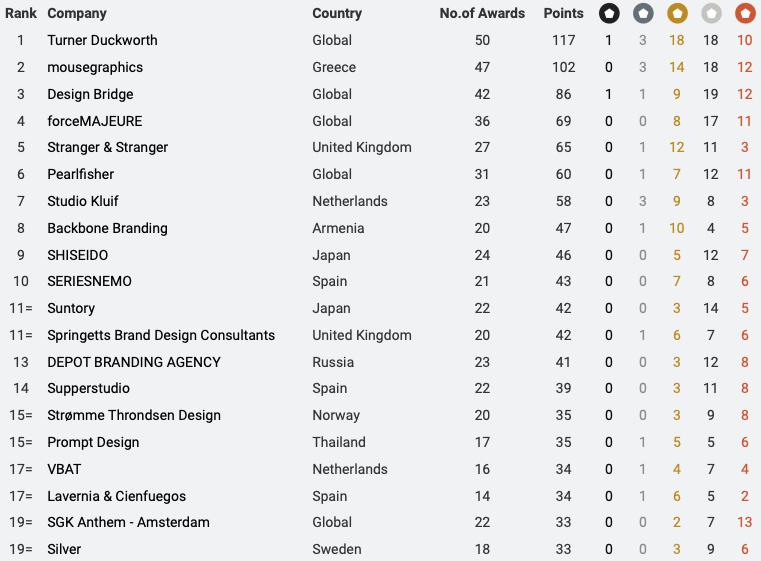
It’s difficult to describe the level of excitement about some of these big names. Just wait until I run you through the methodology…on second thoughts.
Jesus, Mary and Joseph and the Wee Donkey
Finally, even less relevant to higher ed but event more controversially we have this very topical ranking of Line of Duty villains. There are, of course, no clear criteria for bent coppers. They didn’t know at the time of writing who was going to be Number 1. But we do now:
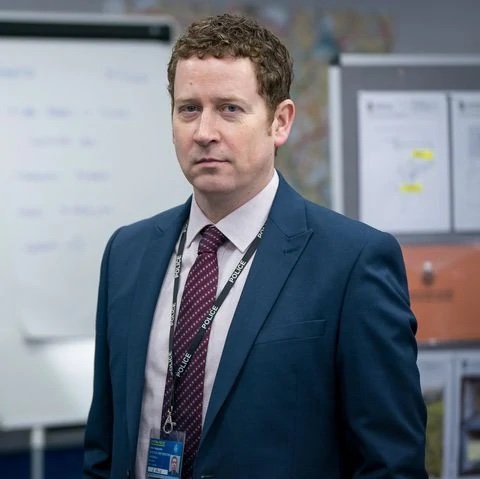
Superintendent Ian Buckles, unmasked as the fourth man in the last episode of Line of Duty, was apparently trained at the fictional Banbury Police Training Centre – but he does not appear to have undertaken any higher education. What are the chances for him returning after parole as an ageing criminology lecturer in season 18 of Line of Duty?
That’s your lot then until the next job lot of pointless university rankings arrives – shouldn’t be long now…













I can’t be the only one who flinched at the use of “dumb” in the article given my understanding that it derives from the slight that Deaf people are “stupid”?
Can you put a spoiler warning for Line of Duty and use a different picture? Managed to avoid spoilers until now